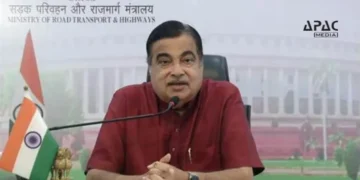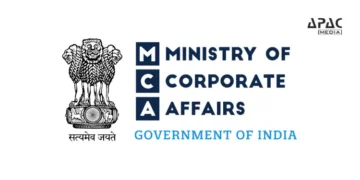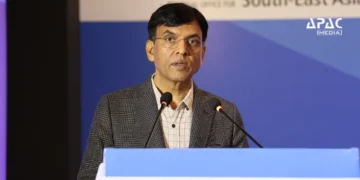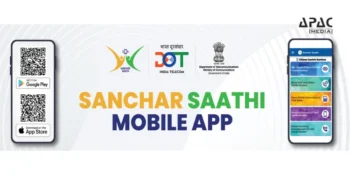Technology, policy, and infrastructure can usher in a farmer-first, secure, and scalable ecosystem for digital agriculture in India. In an exclusive interaction with Nisha Samant of APAC Media, Prashant Kumar Mittal, DDG/HOG Agriculture, NIC, explains how, with platforms like AgriStack, Kisan Suvidha App, PM-KISAN and UFSP services, NIC is actively supporting India’s shift towards a tech-empowered agricultural transformation.
You lead digital innovation for agriculture at NIC. What is your overarching vision for a digitally empowered agricultural ecosystem in India?
At NIC, our vision is to foster a seamless, data-driven and inclusive agricultural ecosystem that empowers every stakeholder, from policymakers to individual farmers, through secure, interoperable, and intelligent digital platforms. We aim to ensure that core government schemes in agriculture are not just digitally enabled, but also responsive, transparent and personalised.
Our approach involves:
– Building scalable, integrated solutions that connect central and state-level schemes
– Leveraging analytics to generate actionable insights for timely interventions
– Ensuring farmer-centric services are accessible in regional languages
– Maintaining strict data governance in line with legal and ethical standards
Through initiatives like the AgriStack, the Unified Farmer Service Platform (UFSP) under Digital Public Infrastructure (DPI) and various State-level e-Governance platforms, NIC is actively supporting India’s shift towards a tech-empowered agricultural transformation.
How is emerging technology, such as AI, remote sensing, IoT and blockchain, being integrated into NIC’s agricultural solutions?
NIC has been actively integrating emerging technologies into agricultural platforms to improve planning, monitoring and delivery of services:
– AI/ML: Used for crop classification, pest prediction and agro-advisories. For example, AI models are being piloted for yield estimation and early detection of crop diseases using satellite imagery and local datasets.
– Remote Sensing & GIS: Widely adopted in schemes like PM-KISAN, Crop Insurance and Soil Health Card to enable geo-tagging, land use mapping, and plot-level validation.
– IoT Integration: In collaboration with domain partners, NIC supports pilot projects that use IoT sensors for real-time weather, soil moisture, and irrigation monitoring, especially in precision farming initiatives.
– Blockchain Pilots: Being explored in supply chain traceability and seed certification systems in select states, in partnership with respective agricultural departments.
All these technologies are being embedded in a modular and interoperable architecture to allow scale-up across various agri-schemes and states.
How is NIC ensuring compliance with the Digital Personal Data Protection Act (DPDP), 2023, particularly for agriculture-centric citizen databases like farmers’ registries?
NIC is aligned with the principles of the Digital Personal Data Protection Act, 2023, and has adopted a privacy-by-design approach across its digital agriculture platforms. Key steps include:
– Ensuring purpose limitation and data minimisation during farmer data collection
– Incorporating explicit consent mechanisms where personal data is collected directly from individuals
– Displaying clear notices to inform data principals about the nature and purpose of data processing, especially in federated systems like AgriStack
– Implementing role-based access controls, secure APIs and audit logs to maintain accountability
NIC, in its role as a data processor, supports respective ministries and departments (data fiduciaries) to implement technical and organisational safeguards, including data retention policies, secure storage, and governance frameworks to uphold personal data protection obligations under the Act.
How is NIC working to ensure that digital platforms are truly accessible and usable by small and marginal farmers, especially in regional languages?
Inclusivity is a core design principle in all of NIC’s agricultural platforms. To ensure grassroots accessibility, NIC has adopted the following strategies:
– Enabling multi-lingual support across platforms, including mobile applications and web portals. Platforms like the Kisan Suvidha App, PM-KISAN, and UFSP services are accessible in major Indian languages.
– Collaborating with Common Service Centres (CSCs) to extend digital services to remote and digitally underserved regions.
– Incorporating voice-based interactions and IVRS-based advisories in pilot projects to assist farmers with low digital literacy.
– Designing user interfaces that are mobile-first and bandwidth-optimised, ensuring usability even in low-connectivity areas.
NIC also works with ministries and state departments to periodically assess usability gaps and adopt feedback mechanisms for iterative improvements.
What future technology or policy trend do you believe will most significantly shape the digital agriculture landscape in the next five years?
The most transformative trend will be the operationalisation of India’s Digital Public Infrastructure for Agriculture, notably through platforms like Agristack and UFSP, which will act as the digital backbone for delivering farmer-centric services.
In terms of technology:
– Interoperability and Open APIs will enable real-time integration of services across stakeholders such as government, private, and research institutions
– AI-powered decision systems, informed by real-time remote sensing and IoT data, will bring precision to farming and policy planning
– Personal data protection–enhancing technologies (PETs) will help balance data-driven innovation with compliance under the DPDP Act
– And importantly, decentralised platforms and federated architecture will make it easier to customise services for states while maintaining a unified digital framework
This convergence of tech, policy and infrastructure will usher in a farmer-first, secure, and scalable ecosystem for digital agriculture in India.


































Discussion about this post